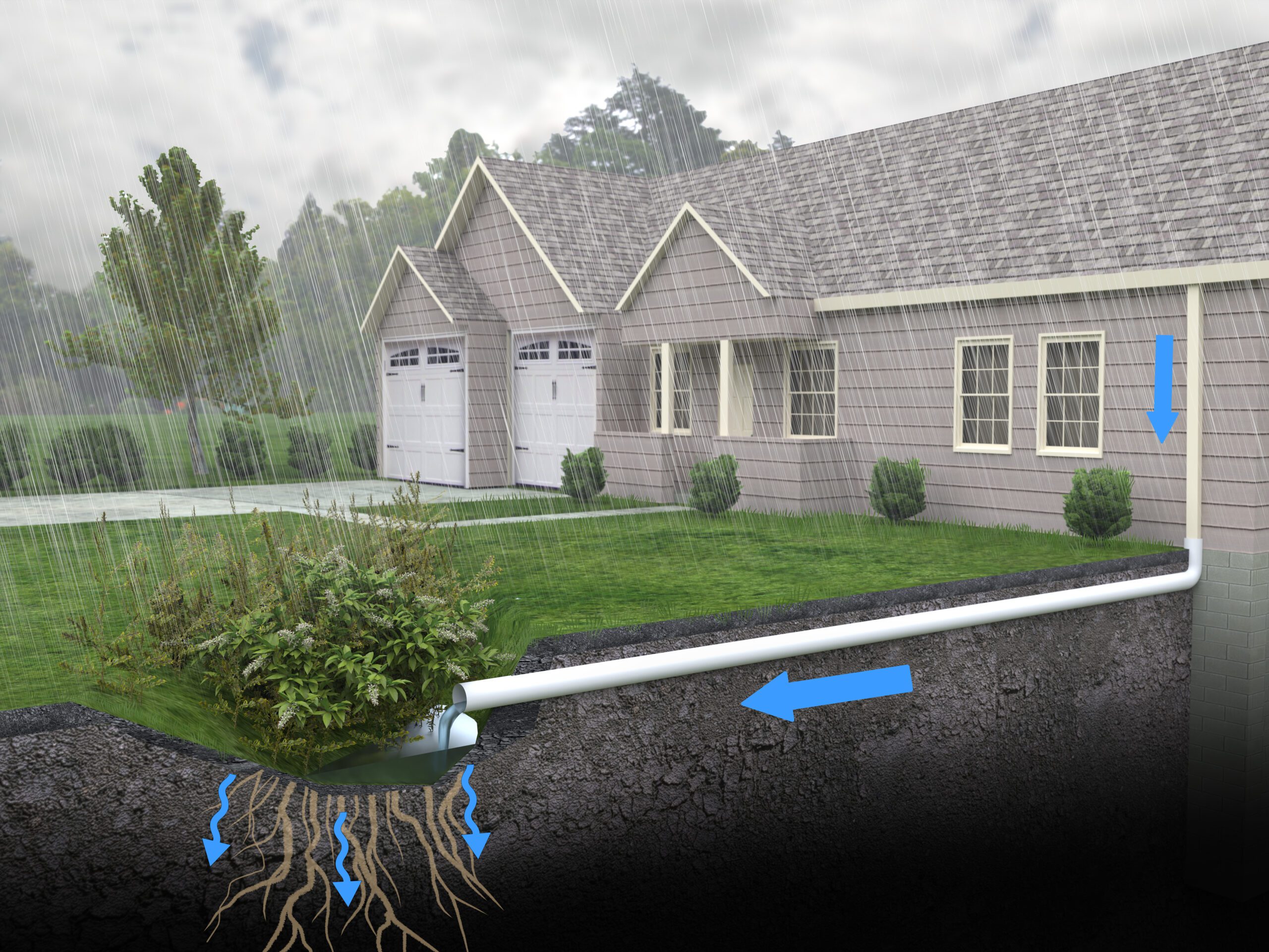Navigating the Waters: Stormwater Detention and Water Quality

Introduction
Our vast planet is made up of roughly 71% water, with only 3% being freshwater that we can use safely. It falls to engineers to innovate and discover the most efficient ways to handle this resource to simultaneously benefit and protect our communities. The intricate design of water infrastructure orchestrates the flow of this precious resource, weaving an underground network vital for our daily lives. The unseen maze of pipes and pumps sustains the water we see flowing from our faucets and taps. Yet, how often do we ponder the invisible infrastructure that transports our water from place to place? How does rainwater make it into the pipes below our bustling streets, and what requirements are in place to ensure safety?
Beyond the physicality of the pipe network lies a realm of policies and regulations, particularly water quality certifications mandated by the Environmental Protection Agency’s (EPA) Clean Water Act. These certifications ensure that construction and development activities do not compromise the quality of our water sources. As we delve into the realm of stormwater detention, we uncover the pivotal role that it plays in engineering projects, especially those involving land development and infrastructure construction. By implementing effective stormwater management techniques and obtaining the necessary certifications, engineers can help to protect the environment and ensure that their projects are sustainable and resilient.
Detention? For Who?
Detention and water quality certifications are two important concepts in engineering related to stormwater management. Detention refers to the temporary storage of stormwater runoff in a detention basin, or other structure, to control the rate of discharge and reduce the peak flow of water that enters the downstream drainage system. The purpose of detention is to prevent flooding and erosion, and can be used to protect the quality of surface water resources. Water quality certifications are required through the Clean Water Act, with two permit phases under the National Pollutant Discharge Elimination System (NPDES). This is in place to ensure that construction or development activities do not degrade water quality. In engineering, this often involves implementing measures such as stormwater management systems, erosion and sediment controls, and other best management practices to prevent pollution and protect the water source.
So, when stormwater is called to the principal’s office, what kind of detention does it receive? This is dependent upon several factors, including cost considerations, existing infrastructure, client design preferences, and the surrounding landscape. There are several methods of detention, including detention ponds, dry detention basins, underground detention, retention ponds, and constructed wetlands, to name a few. BHC’s experts implemented several types of detention into their work for the Blue Springs School District.
Ponds, for example, are large basins designed to collect and temporarily hold stormwater. They allow sediments to settle and provide a place for pollutants to be removed. Dry basins, on the other hand, are designed to remain dry between storm events, using an outlet structure to control the release of stormwater. Underground detention is useful for project areas with limited space, or particularly valuable land to be built on top of. Oftentimes these underground basins are located beneath parking lots or other structures. While detention ponds temporarily hold water, retention ponds retain a permanent pool of water. They provide habitat for wildlife and can be used as aesthetically pleasing landscape elements.
Wildlife and Biodiversity Reinforcement
Detention systems, specifically those above-ground or those with varying water levels, create diverse ecosystems for a wide array of flora and fauna. Floodplains, for example, experience natural hydrological variability, simply meaning the water levels rise and fall. As this happens, it creates diverse habitats, supporting different species that have adapted to various water conditions. Floodplains often support a variety of vegetation due to the repeated inundation of water. The varying plant life supports a wide range of wildlife, including insects, birds, amphibians, and mammals.
Oftentimes, wetlands formed in detention areas can serve as important breeding grounds for many species. These areas offer shelter and protection for fish and amphibians during their reproductive cycles. Not only this, detention basins, when well designed, can act as buffer zones between urban development and natural ecosystems. This separation helps prevent the direct impact of urbanization on wildlife habitats. Properly designed detention systems can also improve water quality by filtering out pollutants and sediments.
A thoughtful approach to detention considers not only flood control and stormwater management, but also the ecological benefits for wildlife and the community. By incorporating these principles, engineers can contribute to the creation of sustainable and biodiverse habitats within urban landscapes. Urbanization and the impact that it has on our natural environments has increasingly become a focus over the years. Engineers find innovative ways to best serve our communities while protecting our natural resources. The environmental intersection of stormwater and vegetation can be researched further in our thought leadership on landscape architecture.
Eco-Friendly Infrastructure
Permeable pavements, bio-filtration systems, geosynthetic liners, and vegetated mats are just a few examples of the sustainable and innovative technologies that engineers utilize in their design. By incorporating these materials into a project, designers can limit the impact made on the landscape. Allowing for more sustainable, effective, and environmentally friendly stormwater management systems that meet or exceed Clean Water Act requirements. Green roof concepts further contribute to sustainable urban development, providing an additional layer of environmental benefits. These progressive approaches showcase the evolution of engineering beyond traditional structures, emphasizing a commitment to sustainability and resilience.
Green Citizenship
Public awareness plays a pivotal role in the success of stormwater management initiatives. Educational workshops, community outreach programs, and demonstration projects engage citizens in understanding the importance of effective stormwater management. Interactive online platforms, such as municipality websites with floodplain maps, provide valuable resources for communities to actively participate in the preservation of water resources. By directly engaging with residents, these programs bridge the gap between theoretical knowledge and practical action, encouraging individuals to become active stewards of their local water environments. Additionally, the implementation of demonstration projects further solidifies these concepts, providing tangible examples that resonate with the community and drive home the impact of responsible stormwater management.
Considerations of cost savings, time efficiency, environmental stewardship, community resilience, regulatory compliance, public safety, and long-term planning underscore the legal and policy implications of stormwater management. Public engagement, when paired with the specialized expertise of qualified stormwater engineers, forms an unshakeable foundation. These experts not only navigate the intricate landscape of stormwater management but also serve as liaisons between the community and regulatory frameworks. Together, public engagement and stormwater engineering expertise intertwine to form the backbone of successful initiatives, saving resources, protecting the environment, and building resilient, sustainable communities.
Aesthetics and Beyond
Stormwater detention facilities seamlessly integrated into urban planning offer solutions to challenges posed by rapid urbanization. These facilities, along with green infrastructure, not only control runoff but also contribute to healthy water quality and aesthetically pleasing green spaces within urban environments. Take the Country Club Plaza, this historic area serves thousands of residents a day, and is situated on the banks of Brush Creek. The Plaza ingeniously incorporates stormwater detention measures, seamlessly blending functionality with aesthetic appeal. Central to this strategy is the utilization of the creek, which meanders through the plaza. This watercourse serves a dual purpose, enhancing the scenic beauty of the area while also serving as a natural detention system. The banks are designed to absorb and slow down runoff, minimizing the risk of flooding. Furthermore, the Plaza features several fountains strategically placed throughout the landscape. Oftentimes these considerations are a part of master planning, serving as a framework for future urban developments and the utilization of certain features.
Conclusion
The significance of stormwater detention goes beyond flood control; it fosters biodiversity, creates habitats, and contributes to the overall well-being of ecosystems. Ingenious engineering solutions, such as permeable pavements and green roofs, underscore the commitment to eco-friendly practices. Moreover, public awareness and engagement emerge as vital components in the success of stormwater management and clean water initiatives, bridging the gap between theoretical knowledge and practical action.
The historical evolution of stormwater detention and water quality certifications reflects a journey of increasing awareness and technological innovation. From ancient water management systems to modern, sustainable approaches, the trajectory has been one of continuous improvement. As we face new challenges, the integration of historical knowledge with contemporary technologies will play a crucial role in shaping the future of stormwater management and water quality certification.
Interested in experiencing ‘No Problem’ customer service when meeting the stormwater design needs of your project? Connect with one of our stormwater experts who can help provide quality detention plans on your next project.
